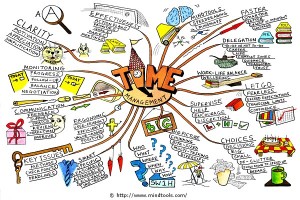 Day 3 of the Nonprofit Executive Leadership Institute (NELI). Thank you, Medina Foundation, for this scholarship so I can participate in this program. I am learning all sorts of interesting and useful stuff. For example, don’t eat nine pounds of potatoes before a 3-hour discussion on measurements and evaluations. Kidding, kidding!
Day 3 of the Nonprofit Executive Leadership Institute (NELI). Thank you, Medina Foundation, for this scholarship so I can participate in this program. I am learning all sorts of interesting and useful stuff. For example, don’t eat nine pounds of potatoes before a 3-hour discussion on measurements and evaluations. Kidding, kidding!
A very useful concept that we have learned is the concept of Technical challenges versus Adaptive challenges. Good leaders must understand to differentiate one from the other, and oftentimes we totally suck at doing that. Technical problems are simpler and usually have apparent solutions. Adaptive challenges are so much more complicated and involve human beings and their emotions and crap like that.
“The most common cause of failure in leadership is produced by treating adaptive challenges as if they were technical problems,” says Ron Heifetz in his book The Practice of Adaptive Leadership, and I am beginning to see that as leaders and as a society we all do this all the time. For example, a while ago, a friend gave me a unicorn poster. I put it up on the wall next to my desk, and the unicorn looked down at me and inspired me to do my work. One day I came to the office, and the unicorn poster was gone! I asked a staff about it, and they said there wasn’t enough Velcro tape for it to stick to the brick wall, and that’s why the unicorn fell and had to be moved to the corner. But this was my unicorn, and I didn’t like it being mishandled and moved around because it was a really cool and rare unicorn poster with significant emotional value and I was used to it being where I left it.
All right, fine, shut up. Here’s a better example. Let’s say you have a program that teaches kids confidence and creativity through cooking. The program, however, is not financially solvent and has been causing the organization to lose money as it operates. The technical solution is to shut down this program. Simple, right? Of course not. “We are leading a blood-and-guts organization with real emotions inside it,” said our instructor, Professor Stephen Page. Staff and volunteers and participants of this program have likely put blood, sweat, and tears into their cooking. Which is probably why their dishes always come out so salty, ahahaha.
All kidding aside, think of the people involved with this program that we are cutting. They are invested in it, this is their baby, and this is a huge change. Change always involves loss, and when there is a loss, there are the stages of grieving, including denial and anger and bargaining and sadness and only at the end is there acceptance. “What is technical to us may be adaptive to someone else,” we learned, and a leader who only sees the technical side of a problem may totally screw up.
Leaders must understand the difference between what is technical and what is adaptive.
We see this misdiagnosis-and-thus-mistreatment (MTM) all over the field though, on larger scales. For example, “Huh, we don’t have enough people of color on our board, and 80% of our clients come from communities of color. Let’s ask a couple of POCs to coffee and talk them to joining our board.” That solves the technical problem and totally misses the point, which is that the organization must adapt and figure out why people of color are not on the board in the first place, what the obstacles are, what the privileges and power dynamics are, etc.
God, this happens all the time, I now realize, and it is annoying at best and absolutely horrendous at worst, perpetuating terrible and crappy systems. A while ago I wrote this post on an awful grant that low-income schools are forced to write. The MTM here is “Oh look, these poor schools need resources. Let’s provide them funding. But wait, with so many schools in need, how should we fairly distribute the money? Let’s make them write 30-page narratives each, and the school with the best written applications should get the funding.” So simple. So technical. And totally screwed up (Schools wih the most needs probably don’t have the resources to write competitive 30-page grants. And forcing struggling schools into a Hunger Games-like battle is fundamentally wrong).
If we truly want to help low-income schools succeed, we must think of it as an adaptive challenge. That means we have to reexamine our beliefs and systems and way of doing things. We cannot reduce blood-and-guts kids and families and communities to technical numbers and rating scales.
Technical fixes are so much quicker and easier to explain and implement, which is why our society loves them so much. But they only work for technical problems. If a plant looks droopy, you water it. If the roof is leaking, you slather some tar on it, stick a shingle on, staple it, and cover with duct tape (Or whatever; I don’t know anything about fixing roofs). We in nonprofits face far more complicated problems, and probably 90% of them are adaptive, not technical. Within our own organizations, we could have change in leadership, or staff turnover, or inactive boards, or a multitude of other challenges, and it is critical for leaders to recognize the adaptive elements and take actions accordingly.
But we must also pay attention to the bigger challenges that we are trying to address as a field. Too often our society treats problems (homelessness, hunger, poverty, low-performing schools, gentrification, racism, etc.) as technical challenges and implements technical solutions when they are far more complicated and requires getting people and systems to change and adapt. Sometimes, facing the complexity of adaptive societal challenges, we turn to technical solutions because they are better than the alternative of doing nothing. Let’s make poor schools write 30-page grants! Let’s get a woman to join our board! Let’s get two organizations led by communities of color to apply to join our coalition! Let’s form a collective impact backbone organization! Let’s put all our funds into collective impact even at the cost of vital direct services!
We need to understand these challenges better, because unlike me and my awesome unicorn poster, our kids and families and communities cannot be helped with some additional Velcro tape, no matter how well-meaning.





